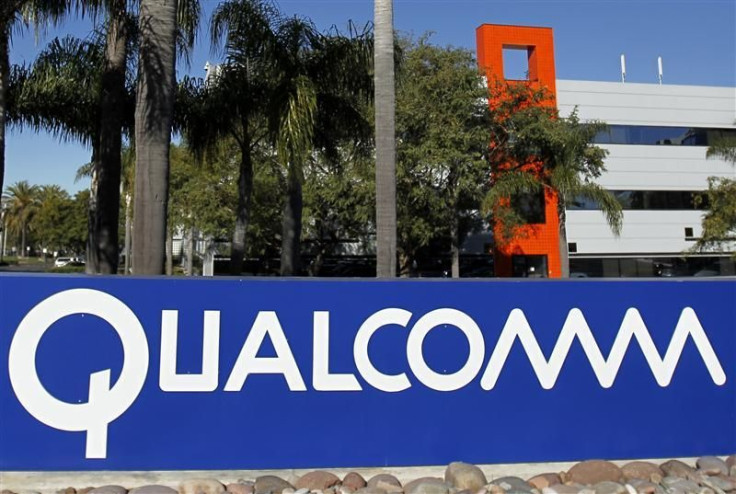Qualcomm 4Q Results Beat Estimates; Predicts Solid Growth

Qualcomm Inc. (Nasdaq: QCOM), the biggest U.S. designer of chips for smartphones, reported higher-than-expected fourth-quarter results Wednesday.
Moreover, the bellwether indicated it expects a big gain in both revenue and earnings for the current quarter. That means a lot of smartphones will be shipped with Qualcomm-designed chips.
The San Diego, Calif., semiconductor giant founded by engineering professor Irwin Jacobs and now run by his engineer son, Paul Jacobs, has benefited for decades from the boom in mobile phones.
It reported fourth-quarter earnings of 89 cents a share on revenue of $4.87 billion, well ahead of predictions of the 82 cents on revenue of $4.67 billion analysts expected. A year ago, Qualcomm had earnings of 80 cents on revenue of only $4.12 billion.
The company is “positioned for double-digit revenue growth again in 2013,” said CEO Jacobs. In the current first quarter, Qualcomm expects revenue to range between $5.6 billion and $6.1 billion, compared to the prior-year's $4.68 billion, with adjusted earnings ranging between $1.08 and $1.16 a share, up between 11 percent and 20 percent from 2011.
Shares of Qualcomm surged more than 8 percent after hours, reaching $62.89, up $4.77.
That's an indication of strong demand for smartphones in the current quarter, with new models from the leaders, Samsung Electronics (Seoul: 005930) and Apple Inc. (Nasdaq: AAPL), grabbing between them about half the market.
Qualcomm essentially invented the CDMA wireless technology, the mainstay of so-called 3G (third-generation) mobile networks. But now the focus is on 4G, which the big carriers headed by AT&T Inc. (NYSE: T), the No. 1 carrier, are speeding to develop.
Qualcomm isn't a slouch. Last year, it acquired Atheros Communications, a next-generation developer of WiFi networking chips, for $3.2 billion, creating the Qualcomm Atheros division.
The company previously acquired well-regarded RF Micro Devices to get deeper into networking, for products like radio-frequency tags used in warehouses and systems like EZ-Pass.
By all rights, Qualcomm's business should be thriving, especially because its designs support chips built around the architecture of the A5 and A6 chips from ARM Holdings of the UK (Nasdaq: ARMH), which are used in the iPhone and iPad families from Apple, the world's most valuable technology company.
Third-quarter sales of all mobile phones rose about 2.4 percent, estimates market researcher IDC, to about 445 million units. Sales of smartphones surged more than 45 percent to nearly 180 millions.
So, given that Qualcomm benefits from both higher sales of Android phones using Google's (Nasdaq: GOOG) standard, as well Apple, earnings ought to be robust.
Qualcomm chips are designed into the iPhone 5 and earlier models of phones from Apple.
Indeed, Sterne Agee analyst Vijay Rakesh believes Qualcomm derives as much as $12 to $15 per iPhone 5 from selling its baseband chip. If Apple starts selling iPhones through China Mobile Ltd. (NYSE: CHL), China's No. 1 mobile carrier, the potential is enormous, he said.
Rakesh has a “buy” rating on Qualcomm shares, with a price target of $71.
Meanwhile, a new line of Qualcomm chips, Snapdragon, has been designed into scores of new smartphones and laptops, dominated by Chinese makers such as Lenovo Group (Pink: LNVGY), the No. 2 global PC maker, which is shipping ThinkPad tablets and may unveil its own smartphone lines.
Rakesh said he was impressed that Quacomm's 40+ design wins could yield a profitable new opportunity for the company.
Shares of Qualcomm fell $2.25 to $58.12 in Wednesday's market plunge. They've risen about 6 percent this year and 2 percent over the past 52 weeks.
© Copyright IBTimes 2024. All rights reserved.






















